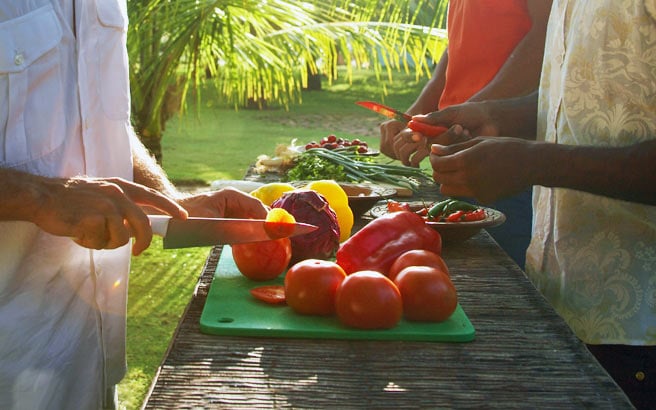 Dr Cecilia Rocha is a member of the International Panel of Experts on Sustainable Food Systems and Director and Professor in Food Security and Food Policy in the School of Nutrition at Ryerson University, Toronto.
Dr Cecilia Rocha is a member of the International Panel of Experts on Sustainable Food Systems and Director and Professor in Food Security and Food Policy in the School of Nutrition at Ryerson University, Toronto.
Brazil’s advances in the area of food and nutrition security in the past two decades are quite significant:
In the midst of much political turmoil and uncertainty, Brazil’s Interministerial Chamber of Food and Nutrition Security (CAISAN) launched the 2nd National Plan for Food and Nutrition Security (PLANSAN 2016-2019) in May 2016. PLANSAN 2016-2019 summarizes the proposed actions to be taken by the federal government to respect, protect, promote and guarantee the right to adequate food to all Brazilians, as determined in the country’s constitution and legislation. It identifies the main challenges in meeting food and nutrition security, and proposes 121 goals to be reached in the next four years through 99 planned initiatives.
Brazil’s success in food and nutrition security
In 2014, the United Nations Food and Agriculture Organization declared Brazil off the “hunger map” since less than 5% of the country’s population showed any degree of undernourishment. From 1990 to 2012, the incidence of extreme poverty (below US$1.25/day per capita) decreased from 25.5% to 3.5% of the population.
Growth in family incomes, along with improvements in basic sanitation, mothers’ education, breast feeding rates, vaccination coverage, and greater access to basic health services, accompanied increased food and nutrition security to put Brazil above the world average in the reduction of child mortality rates. In addition, National Household Surveys showed a decline in the percentage of households reporting any degree of food insecurity.
Zero Hunger strategy
Much of this success was the result of intentional policy. Specific programs to combat hunger and food insecurity were first organised under what became known as the Zero Hunger strategy, which reflected a systemic view of food and nutrition security by addressing food access and also production, distribution and consumption of quality food and diets.
Introduced as part of the Zero Hunger strategy in 2003, the Family Grant Program (Programa Bolsa Família – PBF) has become the largest conditional cash transfer program in the world, covering 13.9 million families in 2015. To qualify for the programme, families must be in a situation of poverty, and the amount of the monthly transfers depend on the level of poverty and the number of children in the household. Studies have shown that families receiving the grant have increased consumption of all food groups.
Continuing challenges
Despite this undeniable progress, having practically eliminated hunger, Brazil still faces many challenges as it now turns to issues concerning the quality of its foods and diets, and to the environmental sustainability of its food system.
One challenge is that poverty continues to be a reality for a large portion of the population, with close to seven million people being extremely poor and a quarter of Brazil’s population receiving cash grants under the PBF. Inequality also continues to be high, with extreme poverty being more common among rural households than urban ones, affecting more black families than white, and more people in the Northeast than in the South. More nuanced ways to reach the most marginalized groups, including Brazil’s indigenous population, must be devised for further meaningful gains.
Another major challenge is the growth in the prevalence of overweight and obesity in all ages and socio-economic groups in Brazil. From 2006 to 2012 overweight rates increased from 43.2% to 51.0% of the adult population in the major cities of the country, while the prevalence of obesity rates went from 11.6% to 17.4% in that period. Estimates for 2015 show that 57% of the adult population and a third of children five to nine years old are overweight. The annual health care costs of non-communicable diseases associated with overweight and obesity, including cancers, are estimated to be between US$2.1 billion and US$5.8 billion.
The federal government has developed a number of policies and programs to combat the rise of overweight and obesity, many of those focusing on children in public schools. In 2011 the government launched the Strategic Action Plan to Combat Chronic Non-Communicable Diseases (2011-2022) incorporating many initiatives, including a revision of the Food Guide for the Brazilian Population.
Launched in 2014, the new Brazilian food guide is being lauded as “revolutionary” for the promotion of sustainable food systems and the classification of foods according to their degree of processing. The simple recommendation from it is that diets should be based on fresh and minimally processed foods, and that the consumption of ultra-processed products should be avoided. PLANSAN 2016-2019 proposes to reinforce these messages.
Civil society maintain momentum
Further progress, however, requires continuing political commitment and government resources. As austerity pressure mounts due to a severe economic recession, and the political capital of the federal government further deteriorates with widespread corruption revelations, the future of social and public health programs is uncertain.
However, Brazil can count on civil society whose participation in policy making as well as monitoring and evaluation of government actions is well ingrained. More than ever, advancing food and nutrition security in Brazil may depend on how engaged and determined civil society groups are in maintaining that participation.
View our 1 minute video featuring all of our 10 Cancer Prevention Recommendations. For the latest news from us, please follow twitter.com/wcrfint

